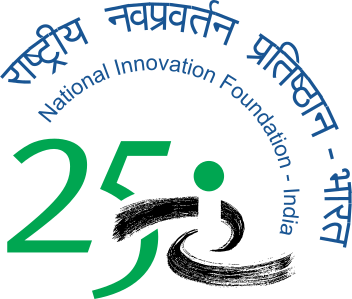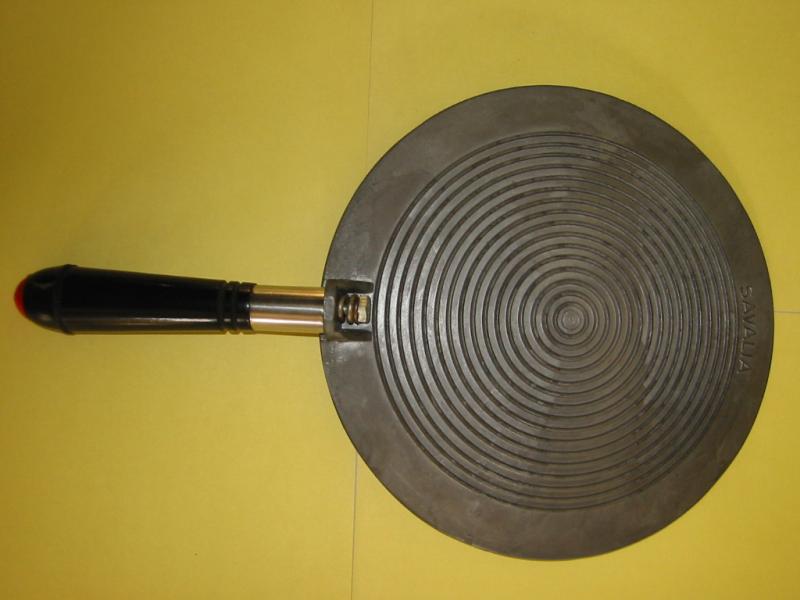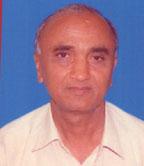Huun avvi shodh karva icchu chhun jethi karodo loko ni mushkeli pati jaye
“I want to innovate some thing of a quality, which could solve problems of millions of people.”
Late Ravjibhai Savaliya (61 years at the time of his demise) was a prolific innovator. Through his innovations, he had proved that his intellect was quite ahead of time. From buttermilk churning machine to ribbed tawa; from the foot pump to an efficient firewood crematorium on the lines of electrical furnace, his innovations have addressed the problems of the commons.
A life, a lifetime achievement
Born on 1st June 1946 at village Babapur, to Madhabhai and Javalben, he was fourth among eight siblings and was gifted to be the most innovative one. As a small boy, he often stared at the new electronic toys in the village exhibitions and thought of making them himself one day. He brought recognition to his school, Sarvodaya, by participating in various Science fairs. A particular incident in 1958, actually gave the prelude to the series of innovations he developed consequently. When a new water pump was installed in his village, the engineers were not able to start it. They were pondering over the problem, a villager insisted that Ravjibhai, only 12-year old then, should be allowed to tinker with the machine. With all the apprehensions, he was allowed, and to everyone’s surprise, he made it work! Such was the genius of his mind and the streak of creativity was subconsciously showing its luminescence even then. Although a bright student, he could not pursue higher studies as his family could not afford his school fee of 50 paisa. However, his teachers Gunubhai Purohit and Hasuben, recognizing his aptitude towards science and his potential to innovate, sent him to Mumbai to do a vocational course at ITI. His stay in Mumbai was not very happy as he was prone to illness. But with the support of Gunubhai’s family he could convalesce and finish his studies.
In 1966, he returned to his village Babapur with the dream of setting up a laboratory, which he did, in due course of time, so that his mechanical innovations could minimize hardships of the villagers. He often explained the working of the farm and water machineries to the folks around while he helped his father in his farms. Solving their day-to-day problems, technical problems in their equipments, he also addressed the science behind them. His mind was churning restlessly on several aspects of these issues and he started working ceaselessly in his own small lab at the village. His efforts were based on trial error and constructive innovation, but unfortunately, none of them were leading to any concrete formation of the object of utility. This not only taxed him mentally but physically as well and he fell ill. For the medical treatment he came to Ahmedabad in 1968. He stayed with his uncle’s family. His cousin Ramjibhai Nakrani, also his best friend, became now his ardent follower. The duo kept on conducting all their erratic experiments together. In about six months’ time, when he recovered fully, he became an assistant in an electric supply store with a monthly salary of Rs. 60/-. Simultaneously, both the friends also started a small workshop of their own at Bapunagar near his home in Ahmedabad where both the friends used to experiment on various issues, which Ravjibhai was pursuing during his stay at village Babapur.
In 1971, after getting married to Triveniben, Ravjibhai started an electrical shop. His wife became a strong link in the new chain of struggles. The electrical shop had to be closed as there was not much profit. Ravjibhai innovated his first ‘social-appliance’ Chaas Valona Yantra (Buttermilk Churning Machine) in 1972. The response to his first innovation was an outright rejection. Triveniben Savaliya narrated teary eyed, how those were the most difficult days. Ravjibhai had drained all his resources and had huge loans to be repaid. He had asked his wife to pack the bags to return to the village. But his uncle encouraged them to stay back. He sold his ancestral land to help Ravjibhai start afresh. Later, the Buttermilk Churning Machine was improved upon and in 1974 he developed a commercially suitable design. But selling an electrical gadget to replace the age-old wooden butter churner was tougher than all his previous struggles. The traditional churner was integral to the cultural set up of the state. All types of stories preceded its sales. People said that women could die of electrocution; some said that buttermilk from it was poisonous. Slowly, patience and consistent communication with the villagers started bearing results and the product started getting popularity.
Triveniben shared an incident of how once there was an order of 15 machines from a village near Surat and all the money that Ravjibhai had, went into manufacturing those machines. There was not enough money to even hire a tempo to go to the village. He along with his cousin Babubhai hitched a lift in a tempo that was going in the same direction, to deliver the machines. With no money they were dropped outside the village. They carried the machines on their head and walked through two feet deep silt to sell them. With determination, integrity and commitment Ravjibhai made some money and restarted his workshop. The buttermilk churning machine soon became a household object and people started calling him ‘Ravjibhai Valonavala’. In 1977, the Savaliya Research Centre (SRC) was started along with his brother Babubhai. This gave the impetus to his vision of rendering social service. He always tried to find the scientific answers to the daily chores and problems. And all his thoughts led to a single question, “Will this be useful for the society and available at an affordable cost?”
Perception of the problem
Ravjibhai noticed that a lot of heat was wasted in the conventional pan for making chapattis. He tried to look for the reasons and inferred it was because of the material of the griddle (tava). Iron was the material used, which is known to have a less thermal conductivity. Moreover the shape of the griddle was such that it guided the flames to the outer edge. He thought of a material, which will have a better thermal efficiency. And also thought of ways in which he could increase the surface area of contact so that the flames could be harnessed to their maximum efficiency.
Ribbed energy efficient griddle (hot plate)
The innovation is a griddle made of aluminum alloy with concentric ribs at the bottom.
The change in material and configuration leads to the saving of a significant amount of energy as compared to the flat iron griddle. The thermal efficiency of ribbed aluminium tavas was found to be 1.09 per cent more than the plain aluminum tavas and 7-8 per cent more than the traditional iron tavas as per the report of Indian Institute of Petroleum, Dehradun. This testing was facilitated by GIAN/NIF. They further suggested varying the thickness and size of the tava and the spacing of the concentric ribs at the bottom for design optimization. Mumbai University Institute of Chemical Technology (UICT) also tested the same and confirmed the advantage.
The presence of the ribs increases the area of contact between the flames and the pan surface i.e. the surface area, which leads to better heat utilization. This griddle having 5 mm thickness ensures lateral conduction of heat as well. The prior art[ii] discloses a variety of utensils for such cooking however, ribbed bottom utensil for cooking could not be found. Ravjibhai also got the Design Registration Certificate for the same.
In traditional griddles, the handle is riveted to the main plate, whether iron or aluminium. With use, due to the regular contraction and expansion, the handle and pan joint becomes loose. This sometimes makes the griddle dangerous to use as it may turn in the hand. Ravjibhai solved this problem by using a spring loaded bolt. He screwed the handle to the pan using this. Whenever the handle gets loose, it can be tightened using a screw driver. But this incorporation increased the cost of the product. Then much work was done to improve the riveting so that the handle also does not get loose with time and at the same time cost also does not escalate.
Thousands of these ribbed bottom tavas have been sold to satisfied customers in Gujarat and other parts of India and even abroad.
A Social Innovator
As Mahesh Patel from GIAN recollects, Ravjibhai was an innovator for the working class and all his innovations were aimed at reducing drudgery. These were centered on the problems faced by the villagers and hard working people. Through sheer self-learning he built his knowledge base of renewable energy - wind, water, aerodynamics and pressure. Energy conservation was also his passion and a frequent trigger for innovation. His innovations are as follows:
Butter Milk Churning Machine (1974): It reduced the time and drudgery in churning buttermilk by hands. The rural women who would sleep late doing household chores and get up early to churn the butter, got relatively free using this machine.
Wheat Thresher (1974-76): This thresher reportedly saved 80 per cent energy as compared to the old models.
Foot Pump (1984): Looking at the problem faced by the people in filling the air in the tyres, Ravjibhai innovated a foot pump, which made pumping air in the tyres easier. He was awarded by the then President of India, Giani Zail Singh for this innovation.
Electrical Furnace Type Wood Based Crematorium (1991): This furnace saved wood significantly. Gujarat Energy Development Association (GEDA) subsidized it and it is now widely used. Crematorium designed by him has sufficient air flow for better aeration from all three sides (bottom and two side walls) so that there is proper burning of wood.
Water Harvesting Methods (1998): To recharge the ground water, Ravjibhai developed low-cost techniques for water harvesting. He even got a tank of one lakh liter capacity built for the same purpose in his house.
Electrical Burner (1999): Using this, the diamond industry has been saving power worth Rs 12 crore every year.
Diamond Polishing Lathe (2001): Used in diamond industry, this lathe replaced old machines, and saved energy up to 90 megawatt, equal to a small power station.
Artificial Rain (2003): He conducted artificial rain experiments in Kutch, Saurashtra and Mumbai. In his “Cloud Seeding” experiment he sprinkled the Silver Iodide (AgI3) on the burning coal. Instead of copying expensive experiments of Israel, he devised the economical method of dispersing the silver iodide on the coal.
Agate Grinding Mill (2006): This machine has helped thousands of workers who used to suffer with fatal silicosis disease in the Agate (akik - a type of chalcedonic quartz that has irregular or curved bands of color.) industry, in the Khambat region of Gujarat, famous for the gems industry. While polishing the gems, the workers used to inhale the dust of the stones, causing silicosis, which proved fatal in many cases. The Agate Grinding Mill has a vacuum pump that pulls the dust in the opposite direction.
Permanent Magnet Direct Current (PMDC) Motor: A brushless motor, as its name suggests, is a motor without brushes, slip rings or mechanical commutater, such as are required in conventional D.C. motors. Outer Rotor Brushless P.M.D.C. looms motor is believed to have high efficiency, which minimizes the electricity bills, besides bringing down the fabric cost. It gives much higher torque than other devices, which is a prior requirement for power loom. It does not heat up much and hence the need for lubrication, replacement of ball bearings, windings, and maintenance cost, etc., is reduced. The outer rotor also works as cooling fan.
Domestic floor mill (1990), oil free compressor (2005), battery bicycle, water generated engine, wind mill, etc., dental compressor for dentists, fuel-efficient I.C. engine with self regulated water injection system are all the other translations of his innovations.
Diamond polishing lathe brought SRC in close association with GIAN and National Innovation and since then several of his innovations have been consistently supported financially, value added and assisted business development as well. Another major project of Ravjibhai was farmers’ wind mill; this innovation was meant to utilise the wind power as per the suitability of Indian farmers. Unfortunately, many of his innovation could not see the light of the day as he departed to heavenly abode on 6th June 2007. His absence has a strong jolt on SRC. His wife Triveni Savalia, recalled him as a loving father and a devout family man, who never disowned himself from his family responsibilities inspite of his professional liabilities. She also said that he always motivated children to have scientific aptitude for learning new skills and for the cause personally used to visit schools and invited them to visit SRC. He was a voracious reader and curious to learn more about science and astronomy.
A Philanthropic Rationalist
Ravjibhai used to call himself “a mere matric fail”. But as his family narrates, he was always studying, finding solutions and innovating. Einstein and Thomas Edison were his idols. Making the students aware of the world of science used to be his priority. He visited schools to give lectures and spot financially weak, but intelligent students and helped them. Garnering knowledge and spreading it were the most important endeavors of his life. His wife told how he would get up in the middle of the night and call up his 11-year old grandson to answer his query, after a whole day of searching in the Science encyclopedias.
GIAN remembered him as an ardent supporter of grassroots innovators. He would help them through his knowledge and resources. Inspite being an innovator himself, interaction with other grassroots innovators also gave him much inspiration and motivation. He also advocated policy changes in favor of the innovators. For an open bidding for his technology organized by state government, he wrote to the Chief Minister and the concerned Secretary demanding that there should not be any open bidding without legal permission from the innovator.
Rebuilding Traditions: Gold for medals, not for dowry
He was always a torch bearer to dispel the darkness of the ineffectual traditions. Instead of giving loads of gold (as is the tradition in the Patel society) to daughter Kirti in marriage, he got medals made of it and instituted awards and scholarships for poor but intelligent students. Though an atheist, he had read lot of religious books of Jainism, Buddhism, Christianity and Hinduism. He would laugh away astrological predictions related to birth and auspicious occasions, saying actual birth time is biological not physical. How could our recitation of hymns affect the crores of planets in the void space with no atmosphere above five miles from the earth? According to him our actions determine our good and bad, not the movement of the planets or silent corners (vaastu) of the house. His daughter-in-law informs that there is no worshipping of idols or incense burning at their home. His family did not perform any traditional rituals after his death on June 7, 2007. That is the way Ravjibhai lived and inspired others also.
Ravjibhai used to call himself Eklavya, the epical Mahabharata hero who pursued training in archery, in spite of lack of resources and rendered his most important art to his teacher as obeisance. This modern Eklavya gave to the society much more than he received. His last wish to construct a ‘Science Temple’ still remains a dream. His son Vinay Savaliya told that the concept of Science Temple was to attract millions of people, who would visit temples, not Science Museums. He wanted to keep at least 1000 prototypes of his inspiration, Thomas Edison there.
[i] The memorial movie on Lt. Ravjibhai Savalia by Nagendra Vijay, Senior Editor of magazine Safari (in Gujarati language), 2007.
[ii] Use of aluminum for cookware is well known in art some of the results can be seen at http://www.prestigesmartkitchen.com/cookware-non-stick-cookware-omega-select.aspx,http://www.nirlep.com, WO2004/019742 - March 11, 2004, etc). US patent 4768427 (Sep 6, 1988) has disclosed use of fins in the cookware but that are in the internal surface and for the purpose of preventing food stuff from adhering.








